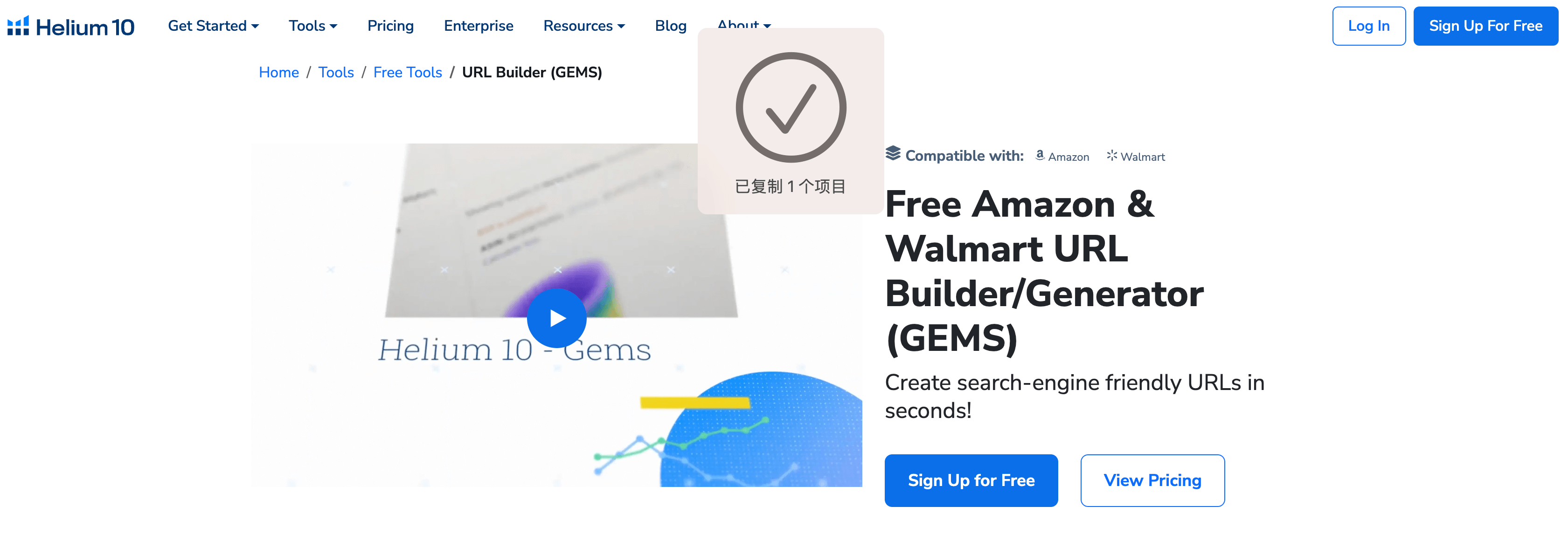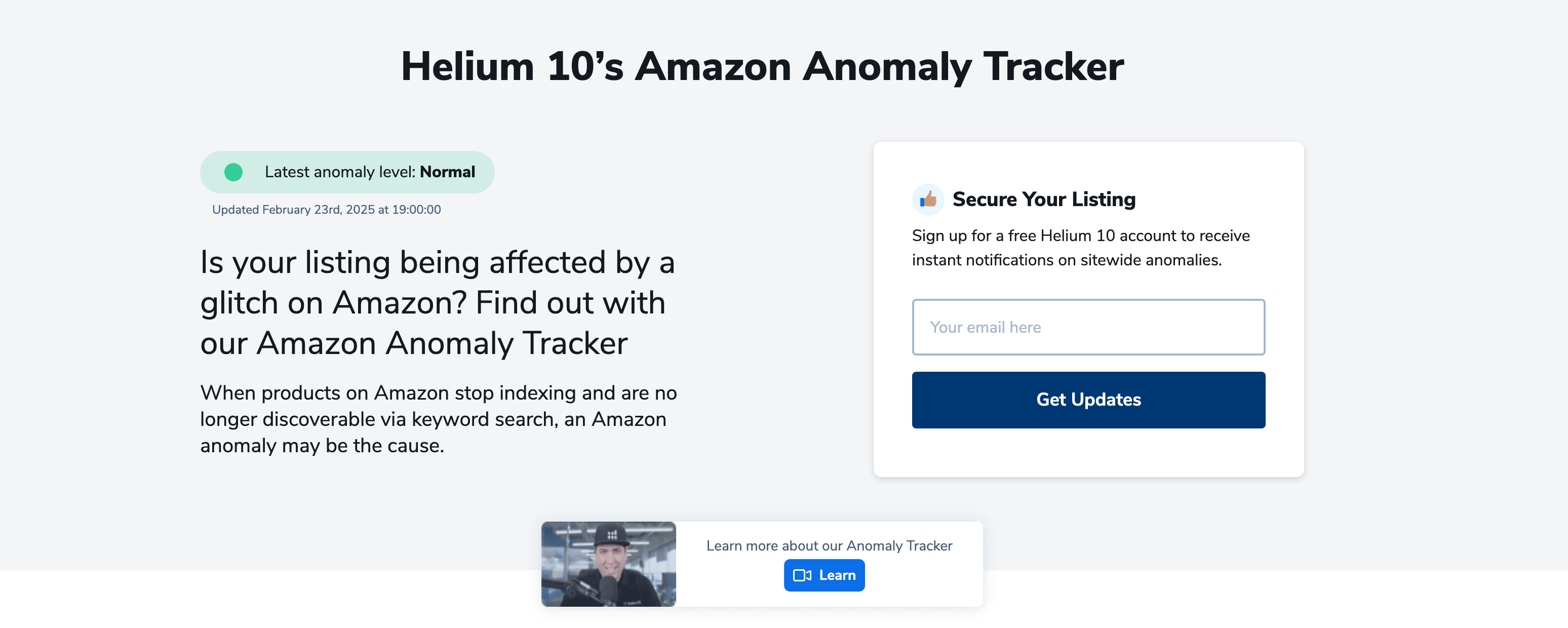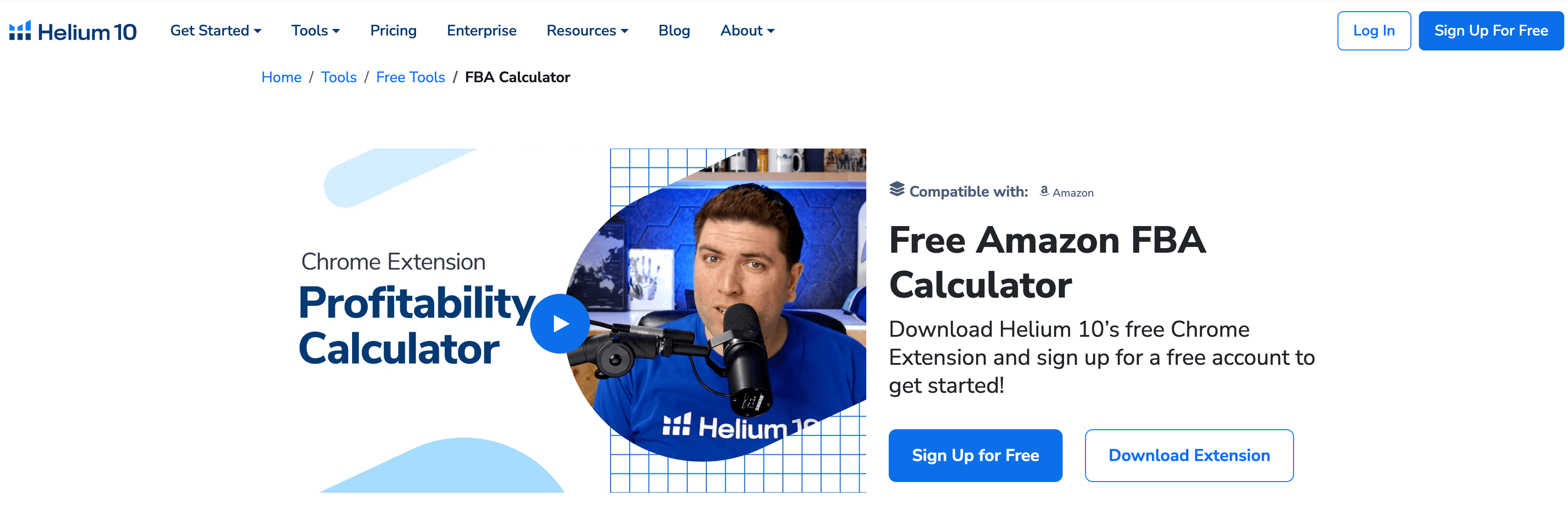How to Analyze Market Trends with Helium 10 for Product Selection
In the ever-evolving world of e-commerce, staying ahead of market trends is crucial for success. Helium 10, a powerful suite of tools designed for Amazon sellers, offers a range of features to help you analyze market trends and make informed product selection decisions. One of its standout tools, Market Trend Analysis, allows you to identify seasonal trends, monitor product demand, and uncover emerging opportunities. This guide will walk you through how to use Helium 10 to analyze market trends effectively, ensuring you choose products that align with consumer demand and maximize profitability. 📈
1. Introduction to Helium 10’s Market Trend Analysis
Helium 10 is a comprehensive software suite designed to help Amazon sellers optimize their businesses. Among its many features, Market Trend Analysis is particularly valuable for understanding how product demand fluctuates over time. This tool provides insights into seasonal trends, historical sales data, and future projections, enabling you to make data-driven decisions. By analyzing market trends, you can avoid investing in products with declining demand and focus on those with growth potential. 🌟
1.1 Why Market Trend Analysis Matters
Understanding market trends is essential for identifying profitable opportunities and minimizing risks. For example, seasonal products like holiday decorations or summer accessories may see a spike in demand during specific times of the year. By analyzing these trends, you can plan your inventory and marketing strategies accordingly, ensuring you capitalize on peak demand periods. Additionally, tracking long-term trends helps you identify evergreen products that consistently perform well throughout the year. 📊
1.2 Key Features of Helium 10’s Market Trend Analysis
Helium 10’s Market Trend Analysis tool offers several features to help you analyze trends effectively:
- Historical Sales Data: View past sales performance to identify patterns and seasonality.
- Demand Forecasting: Predict future demand based on historical data and market conditions.
- Competitor Analysis: Monitor how competitors’ products perform over time.
- Customizable Filters: Narrow down your analysis by category, price range, and other criteria. 🔍
1.3 How to Access the Market Trend Analysis Tool
To access the Market Trend Analysis tool, log in to your Helium 10 account and navigate to the Trends section. From there, you can input specific keywords or product categories to analyze their performance over time. The tool provides visual graphs and detailed data to help you interpret the results. 📉
1.4 Benefits of Using Helium 10 for Market Trend Analysis
Using Helium 10 for market trend analysis offers several benefits:
- Data-Driven Decisions: Make informed choices based on accurate and up-to-date data.
- Time Efficiency: Save time by automating the analysis process.
- Competitive Edge: Stay ahead of competitors by identifying trends before they peak.
- Risk Mitigation: Avoid investing in products with declining demand. 🛡️
1.5 Real-World Example of Market Trend Analysis
Consider a seller looking to launch a new line of fitness equipment. By using Helium 10’s Market Trend Analysis, they discover that demand for home gym equipment spikes in January (due to New Year’s resolutions) and remains steady throughout the year. Armed with this insight, the seller can plan their product launch and marketing campaigns to align with these trends, maximizing their chances of success. 🏋️♂️

2. Step-by-Step Guide to Analyzing Market Trends with Helium 10
Now that you understand the importance of market trend analysis, let’s dive into a step-by-step guide on how to use Helium 10 to analyze trends effectively. This process will help you identify profitable products and make data-driven decisions. 🛠️
2.1 Step 1: Define Your Product Niche
Before analyzing trends, it’s essential to define your product niche. Consider factors like your interests, expertise, and target audience. For example, if you’re passionate about fitness, you might focus on sports equipment or activewear. By narrowing down your niche, you can focus your analysis on relevant categories and keywords. 🎯
2.2 Step 2: Use the Keyword Research Tool
Helium 10’s Keyword Research tool is a great starting point for identifying popular search terms within your niche. Enter relevant keywords (e.g., “yoga mat” or “dumbbells”) to generate a list of related terms and their search volume. This data will help you understand what products consumers are searching for and how demand fluctuates over time. 🔑
2.3 Step 3: Analyze Historical Sales Data
Next, use the Market Trend Analysis tool to examine historical sales data for your chosen keywords or products. Look for patterns, such as seasonal spikes or steady growth, to identify trends. For example, if you’re analyzing “yoga mat,” you might notice increased demand during January and September (common times for fitness resolutions). 📅
2.4 Step 4: Monitor Competitor Performance
Helium 10’s Competitor Analysis feature allows you to track how similar products perform over time. Identify top-performing competitors and analyze their sales trends, pricing strategies, and customer reviews. This information can help you identify gaps in the market and refine your product selection. 🥇
2.5 Step 5: Validate Your Findings
Finally, validate your findings by cross-referencing data from multiple sources. For example, compare Helium 10’s trend analysis with Google Trends or industry reports to ensure accuracy. Once you’ve confirmed the trends, you can confidently move forward with your product selection. ✅

3. Leveraging Market Trends for Product Selection
Analyzing market trends is only the first step; the real value lies in leveraging these insights to select the right products. Here’s how you can use Helium 10’s data to make informed decisions. 🛒
3.1 Identify Evergreen Products
Evergreen products are items with consistent demand throughout the year, such as kitchen utensils or pet supplies. Use Helium 10’s trend analysis to identify these products and focus your efforts on building a sustainable inventory. 🌳
3.2 Capitalize on Seasonal Trends
Seasonal products, like holiday decorations or summer accessories, offer lucrative opportunities but require careful planning. Use Helium 10 to identify peak demand periods and ensure your inventory is ready in advance. 🎄
3.3 Spot Emerging Trends
Helium 10’s trend analysis can help you identify emerging trends before they become mainstream. For example, if you notice increasing demand for eco-friendly products, you can position yourself as a leader in this niche. 🌱
3.4 Avoid Declining Markets
Not all trends are worth pursuing. Use Helium 10 to identify products with declining demand and avoid investing in them. This proactive approach minimizes risks and protects your bottom line. 📉
3.5 Optimize Pricing and Marketing Strategies
Market trends can also inform your pricing and marketing strategies. For example, if demand for a product is expected to increase, you can adjust your pricing accordingly or launch targeted marketing campaigns to capitalize on the trend. 💰

4. Common Mistakes to Avoid When Analyzing Market Trends
While Helium 10’s tools are powerful, there are common mistakes that sellers should avoid when analyzing market trends. Here’s how to steer clear of these pitfalls. ⚠️
4.1 Relying Solely on Historical Data
While historical data is valuable, it’s essential to consider current market conditions and future projections. Use Helium 10’s forecasting tools to complement historical data and make more accurate predictions. 🔮
4.2 Ignoring Competitor Analysis
Failing to analyze competitor performance can lead to missed opportunities. Use Helium 10’s competitor analysis features to gain insights into what’s working for others and how you can differentiate yourself. 🥊
4.3 Overlooking Niche Markets
Focusing solely on broad categories can cause you to overlook profitable niche markets. Use Helium 10’s filters to explore smaller, underserved niches with high growth potential. 🕵️♂️
4.4 Misinterpreting Data
Misinterpreting trend data can lead to poor decisions. Take the time to understand the metrics and use Helium 10’s visualizations to interpret the data accurately. 📊
4.5 Failing to Adapt
Market trends can change rapidly, so it’s essential to stay flexible and adapt your strategies as needed. Regularly monitor trends using Helium 10 and adjust your approach accordingly. 🔄

5. Tools and Resources to Complement Helium 10
While Helium 10 is a powerful tool, combining it with other resources can enhance your market trend analysis. Here are some tools and resources to consider. 🧰
5.1 Google Trends
Google Trends provides insights into search interest over time, complementing Helium 10’s data. Use it to validate trends and identify emerging opportunities. 🌐
5.2 Jungle Scout
Jungle Scout is another popular tool for Amazon sellers, offering product research and market analysis features. Use it alongside Helium 10 for a more comprehensive view. 🦁
5.3 Social Media Listening
Social media platforms like Instagram and TikTok can provide valuable insights into consumer preferences and emerging trends. Use social listening tools to stay ahead of the curve. 📱
5.4 Industry Reports
Industry reports and market research studies offer in-depth insights into specific niches. Use these resources to complement Helium 10’s data and make more informed decisions. 📚
5.5 Competitor Websites
Analyzing competitor websites can provide insights into their product offerings, pricing strategies, and marketing tactics. Use this information to refine your approach. 🕸️

6. Case Study: Successful Product Selection Using Helium 10
To illustrate the power of Helium 10’s market trend analysis, let’s explore a real-world case study. This example demonstrates how a seller used Helium 10 to identify a profitable product and achieve success. 🏆
6.1 Identifying a Niche
The seller, passionate about outdoor activities, used Helium 10’s Keyword Research tool to identify a niche within the camping gear category. They discovered that “portable camping stoves” had consistent demand and low competition. 🏕️
6.2 Analyzing Market Trends
Using Helium 10’s Market Trend Analysis, the seller analyzed historical sales data for portable camping stoves. They noticed a steady increase in demand during the spring and summer months, with a peak in June. 🔥
6.3 Validating the Opportunity
The seller cross-referenced Helium 10’s data with Google Trends and competitor analysis, confirming the opportunity. They also identified a gap in the market for eco-friendly camping stoves. 🌿
6.4 Launching the Product
Armed with this data, the seller sourced eco-friendly portable camping stoves and launched their product in early spring. They used targeted marketing campaigns to capitalize on the seasonal trend. 🚀
6.5 Achieving Success
By leveraging Helium 10’s insights, the seller achieved significant sales during the peak season and established a strong presence in the camping gear niche. Their success demonstrates the power of data-driven product selection. 💪

7. Tips for Maximizing Helium 10’s Market Trend Analysis
To get the most out of Helium 10’s market trend analysis, follow these tips and best practices. 🛠️
7.1 Regularly Update Your Analysis
Market trends can change quickly, so it’s essential to update your analysis regularly. Set aside time each month to review trends and adjust your strategies as needed. 📅
7.2 Combine Multiple Tools
While Helium 10 is powerful, combining it with other tools like Google Trends and Jungle Scout can provide a more comprehensive view of the market. 🧩
7.3 Focus on Long-Term Trends
While seasonal trends offer short-term opportunities, focusing on long-term trends can help you build a sustainable business. Use Helium 10 to identify evergreen products with consistent demand. 🌳
7.4 Stay Informed About Industry Changes
Stay informed about changes in your industry, such as new regulations or emerging technologies. These factors can impact market trends and influence your product selection. 📰
7.5 Experiment and Iterate
Don’t be afraid to experiment with different products and strategies. Use Helium 10’s data to track your results and iterate on your approach. 🔄

8. Conclusion: Mastering Market Trend Analysis with Helium 10
Mastering market trend analysis with Helium 10 is a game-changer for Amazon sellers. By understanding how to analyze trends, identify opportunities, and make data-driven decisions, you can significantly increase your chances of success. Whether you’re a seasoned seller or just starting out, Helium 10’s tools provide the insights you need to stay ahead of the competition and build a profitable business. 🚀
8.1 Recap of Key Takeaways
- Use Helium 10’s Market Trend Analysis to identify seasonal and evergreen trends.
- Combine multiple tools and resources for a comprehensive view of the market.
- Avoid common mistakes like relying solely on historical data or ignoring competitor analysis.
- Leverage trends to optimize your product selection, pricing, and marketing strategies. 📝
8.2 Final Thoughts
Market trend analysis is an ongoing process that requires dedication and adaptability. By consistently using Helium 10 to monitor trends and refine your strategies, you can stay ahead of the curve and achieve long-term success in the competitive world of e-commerce. 🌟
8.3 Next Steps
Ready to take your product selection to the next level? Start by exploring Helium 10’s Market Trend Analysis tool and applying the strategies outlined in this guide. With the right approach, you can unlock new opportunities and build a thriving Amazon business. 🛒
By following this step-by-step guide, you’ll be well-equipped to analyze market trends with Helium 10 and make informed product selection decisions. Happy selling! 🎉


Comments